Whether you're a member of the audience, a performer on stage, or a crew member backstage, you must have heard that disturbing howl from the speaker. This sound occasionally interrupts a speech or performance. It's called feedback.
Microphone feedback can occur in any audio setup, regardless of how expensive or low-budget it is.
In some cases, feedback sound is used as an effect. Musicians like the Beatles and Kanye West have explored the sound to add beauty to their music. However, most times, feedback is just a pain.
In this article, I will explain to you the causes of microphone feedback and give you practical solutions on how you can stop it.
What is mic feedback?

Mic feedback is that annoying screeching noise that sometimes comes from speakers. Sometimes, the noise is not so annoying, and can even be used to artistic effect. But most times, it is an unwanted sound that you must eliminate.
Even though I described it as a "screeching" noise, some feedback may have a lot of basses. It all depends on the room and frequency response of the mic or instrument involved. It's not uncommon to hear swelling bass feedback from time to time. However, the ringing, screeching noise is the most common.
What causes microphone feedback?
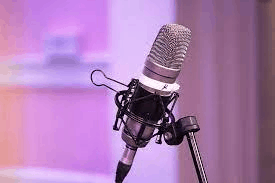
The most common cause of microphone feedback is the looped signal. Typically, the sound travels from a mic, through the mixer, to the amp, and then to the speaker. The speaker should be the last component on the audio chain. But if the sound from the speaker goes back directly into the microphone, you will begin to hear feedback sounds.
The sound captured from the speaker may even be from other mics, but once there's an unending signal loop, the feedback starts ringing.
Even though signal loop is the major cause of mic feedback, there are factors that increase the possibility or frequency of having feedback.
Some of these factors include:
- Frequency response of the microphone
- The tone of the sound source
- Positioning of the microphone
- Acoustic properties of the room
- Microphone volume
- Speaker volume
The frequency response and volume of the mic work together to increase or reduce feedback.
If a mic naturally has a high midrange and the speakers and amplifiers have a similar response, it's likely that there will be some midrange feedback, even at decent volumes.
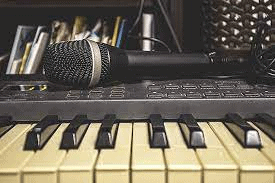
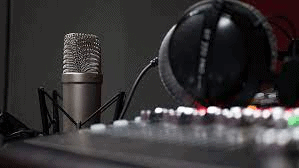
It will be more pronounced when miking instruments or voices with a lot of midrange in their frequency response.
Regardless of the cause of the feedback and the factors involved, there are practical solutions you can apply.
Now, how do you stop microphone feedback from messing up your sound production?
How to stop and eliminate microphone feedback?
Here are some practical steps that you can use to prevent microphone screech.
Microphone and Speaker Positioning
Use your space resourcefully. Ensure that you keep enough distance between your speakers and mic as you can. If your speaker and mic are too close, it becomes difficult to avoid feedback.
If possible, work with your stage designer on where and how to position the monitors. You must place them such that the performer will not point the mic at them accidentally.
One essential rule is that you should not place a speaker behind the performer. If you do, the speaker will blast sound into the mic. Instead, place the speaker in front of the performer- either facing the audience or the performer. If it's facing the audience, the performer's mic can't capture sounds from it.
If it's a monitor speaker and it's facing the performer, the mic's back is turned to the monitor. So, there won't be a signal loop.
Lastly, when using monitors facing the stage, ensure that there's no sound reflective surface behind the performer. The speaker's sound could bounce back from it and get into the mics.
If it's a hard surface, keep a safe distance to prevent reflected sound from bouncing back from it.
EQing

Another method of dealing with microphone feedback is to use the EQ. Usually, mic feedback occurs within a narrow frequency range. If you can find the rogue frequency and reduce it, then your problem is solved.
You can achieve this while setting up by increasing the gain, then finding the affected frequencies.
Sometimes, you may need to EQ to adjust for the performer's shortcomings. Some artists hold their mics at the head. This bad habit turns a cardioid mic into an omnidirectional mic, which makes feedback almost inevitable.
To combat this challenge, you may have to cut a wider frequency range around 800 Hz to 2 kHz and add some compression. Where you can, you may advise the vocalist on better mic handling habits.
Automatic feedback reducers
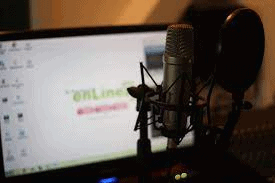
If you have a large setup with not enough space, you may have feedback challenges from multiple sources. It's best to use automatic feedback reducers in this case, because it will be exhausting to keep up with sudden feedback breakouts.
Automatic feedback reducers will act faster than you can. You can have standalone feedback reducers, or purchase wireless mics that have built-in feedback eliminators.
Microphone choice
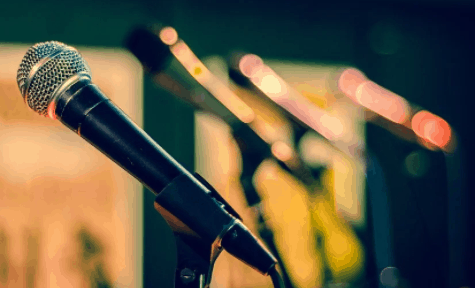
If you don't want feedback on stage, choose cardioid, hypercardioid, or supercardioid mics.
These mics only pick what's right in front of them. If a mic has background sound rejection, it's easier to not capture unwanted sounds from the speakers.
An omnidirectional mic picks sounds from all directions, which makes it more likely to give you feedback, especially when you have loud sound coming from your speakers. A bidirectional mic will give you similar problems.
Where a cardioid mic is not a practical option like if you're recording a choir, you must work with your positioning.
Read our other popular posts:
- 10 Best Rap Microphones: Top Picks for 2025
- How to Earrape Mic? (Discord, Zoom) – Don't Miss this Guide
Conclusion
Unless you're using a mic feedback sound effect, that microphone screeching noise puts off your audience and messes up the performance.
And it's better to test for it beforehand. Test your setup for feedback by increasing the master gain to identify problematic frequencies.
I trust that you will eliminate speaker feedback by applying these methods.

